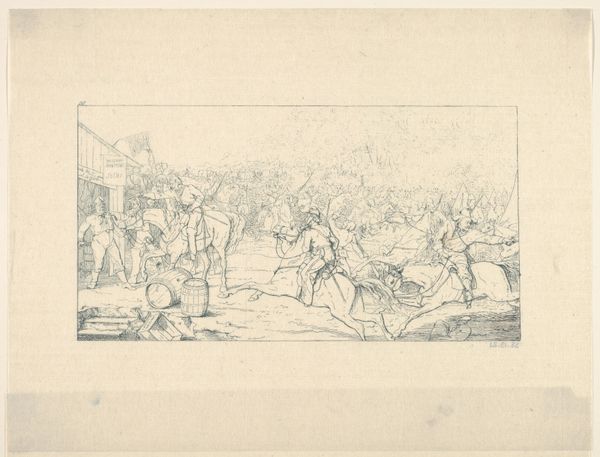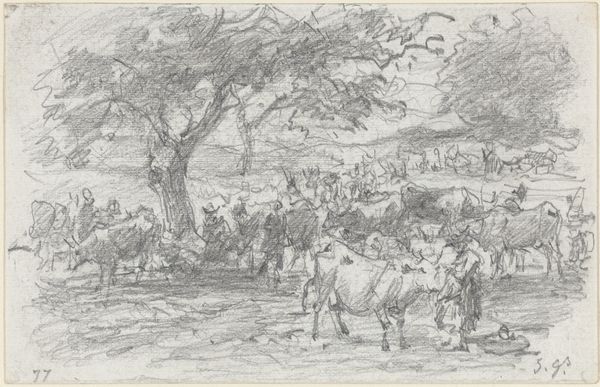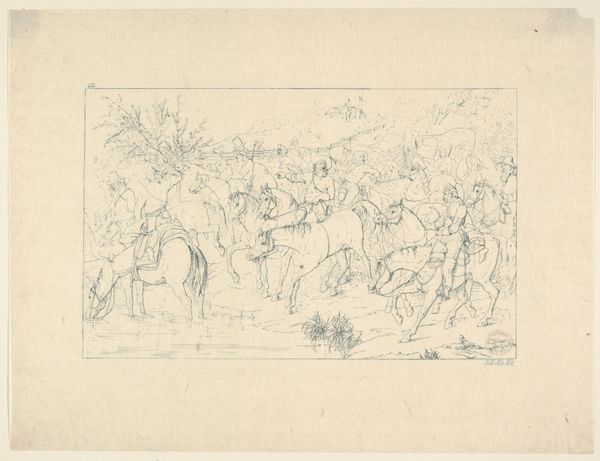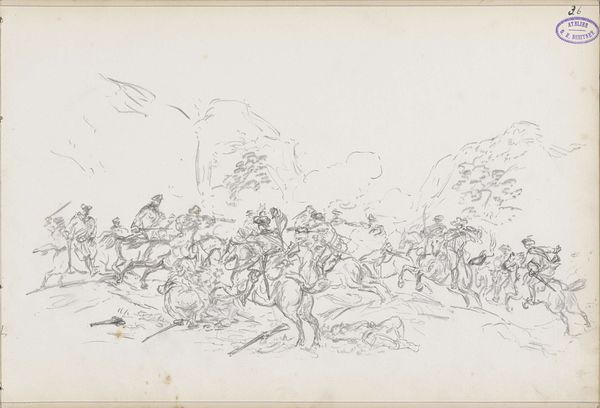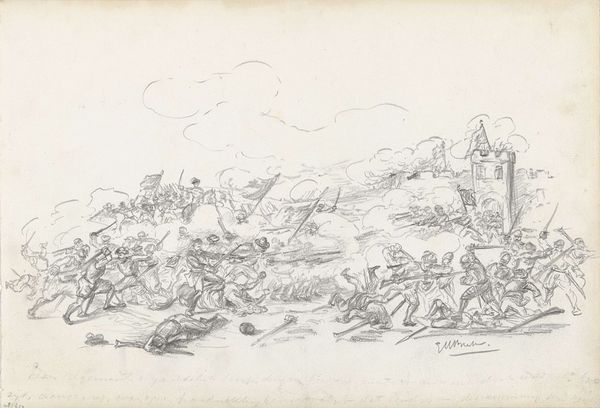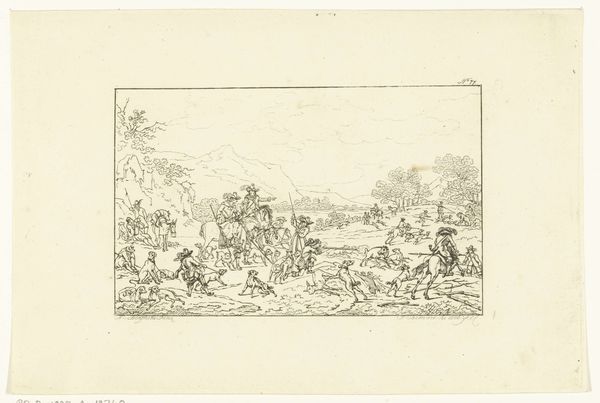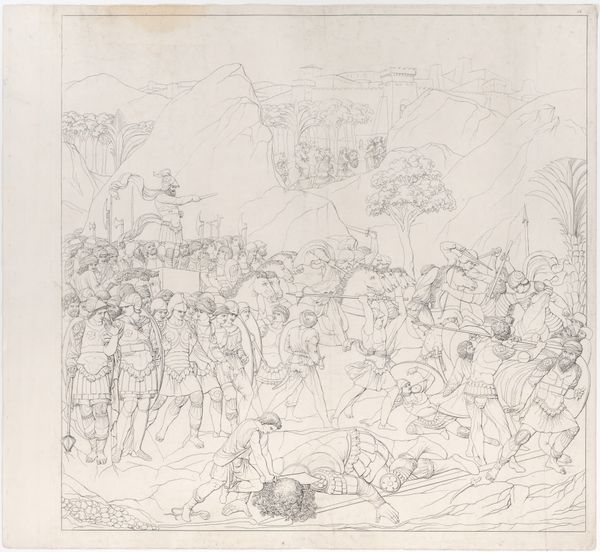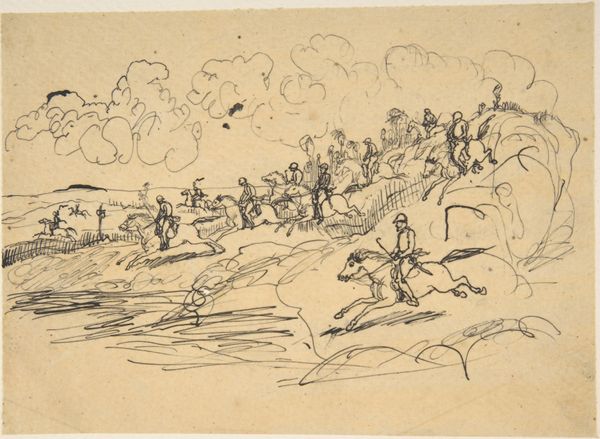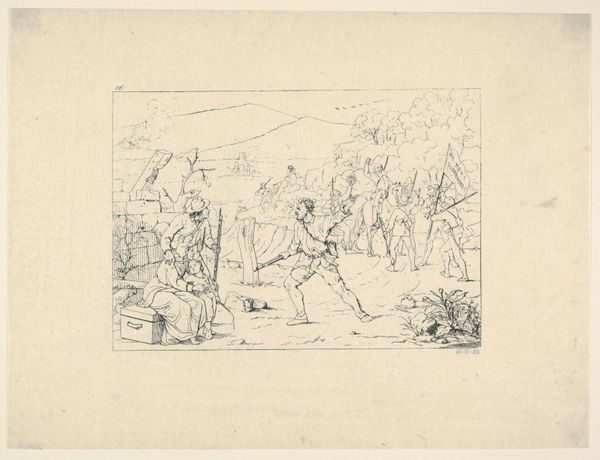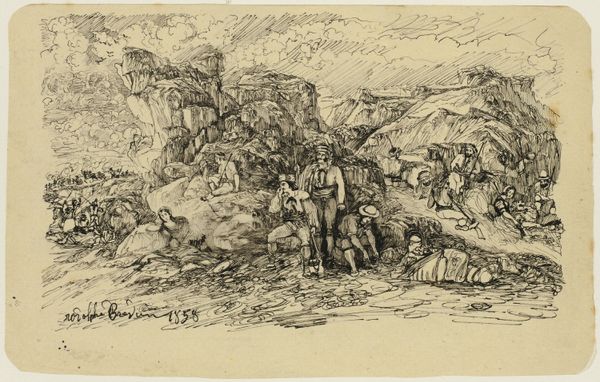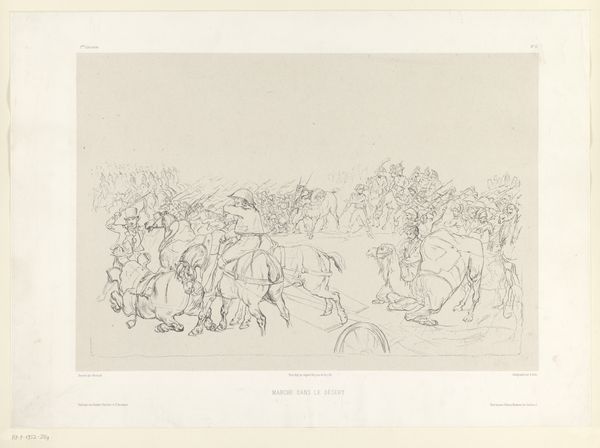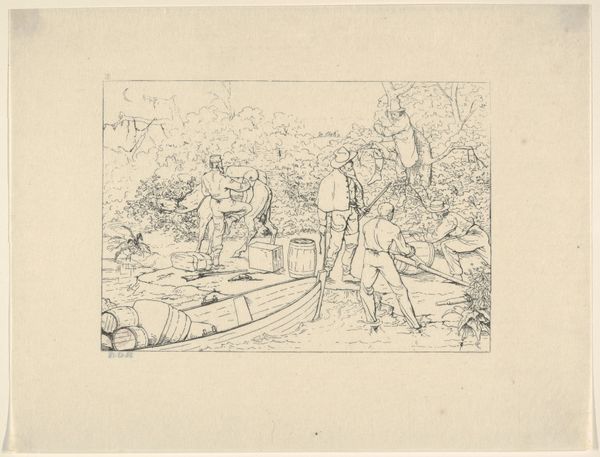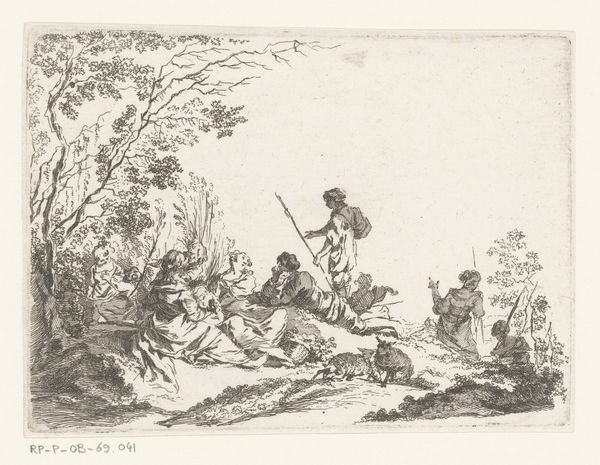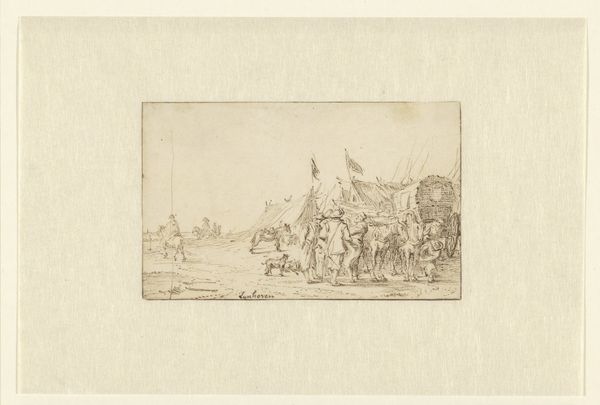
Return of a Raiding Party from Pennsylvania (from Confederate War Etchings) 1861 - 1863
0:00
0:00
Dimensions: Image: 4 5/8 x 7 13/16 in. (11.7 x 19.9 cm) Sheet: 7 15/16 x 10 7/16 in. (20.2 x 26.5 cm)
Copyright: Public Domain
Curator: Editor: This etching, Adalbert Volck’s *Return of a Raiding Party from Pennsylvania*, was created between 1861 and 1863. It feels chaotic, like a snapshot of movement. The soldiers seem to be driving livestock. What story do you see being told here? Curator: I see the economic underpinnings of conflict. This print, made with readily available etching techniques, displays Confederate soldiers returning from Pennsylvania, not as heroic warriors, but as economic actors. Notice how the focus isn't on battle, but on the "spoils" – the captured livestock. It shows war not as glory, but as a brutal act of resource acquisition, challenging any romanticized view. The materials themselves, the cheap print, were easily disseminated, furthering the propaganda value. What do you make of that wagon? Editor: It does seem overloaded! Like they're taking everything they can carry. So you’re suggesting the act of *making* the print cheap and reproducible enhances its message? Curator: Precisely. This work, in its material simplicity, reveals a complex interaction between labor, resources, and power during wartime. Think about who had access to art supplies, who was depicted, and who was consuming the image. Whose stories are missing here? Editor: Presumably those whose resources are being taken. This reframing makes me consider the impact this event had on both communities differently. The value we assign shifts away from valor and towards economic and material costs. Curator: Exactly. By focusing on the materiality of the artwork and the depicted goods, we gain insight into the less-romanticized, often-overlooked realities of war and the resources involved. What new meanings might emerge? Editor: I will certainly look more at the materiality of a work as evidence of production and power. It’s more than just a picture; it's a document of the means and aims. Thanks for this material perspective on Volck’s image.
Comments
No comments
Be the first to comment and join the conversation on the ultimate creative platform.
